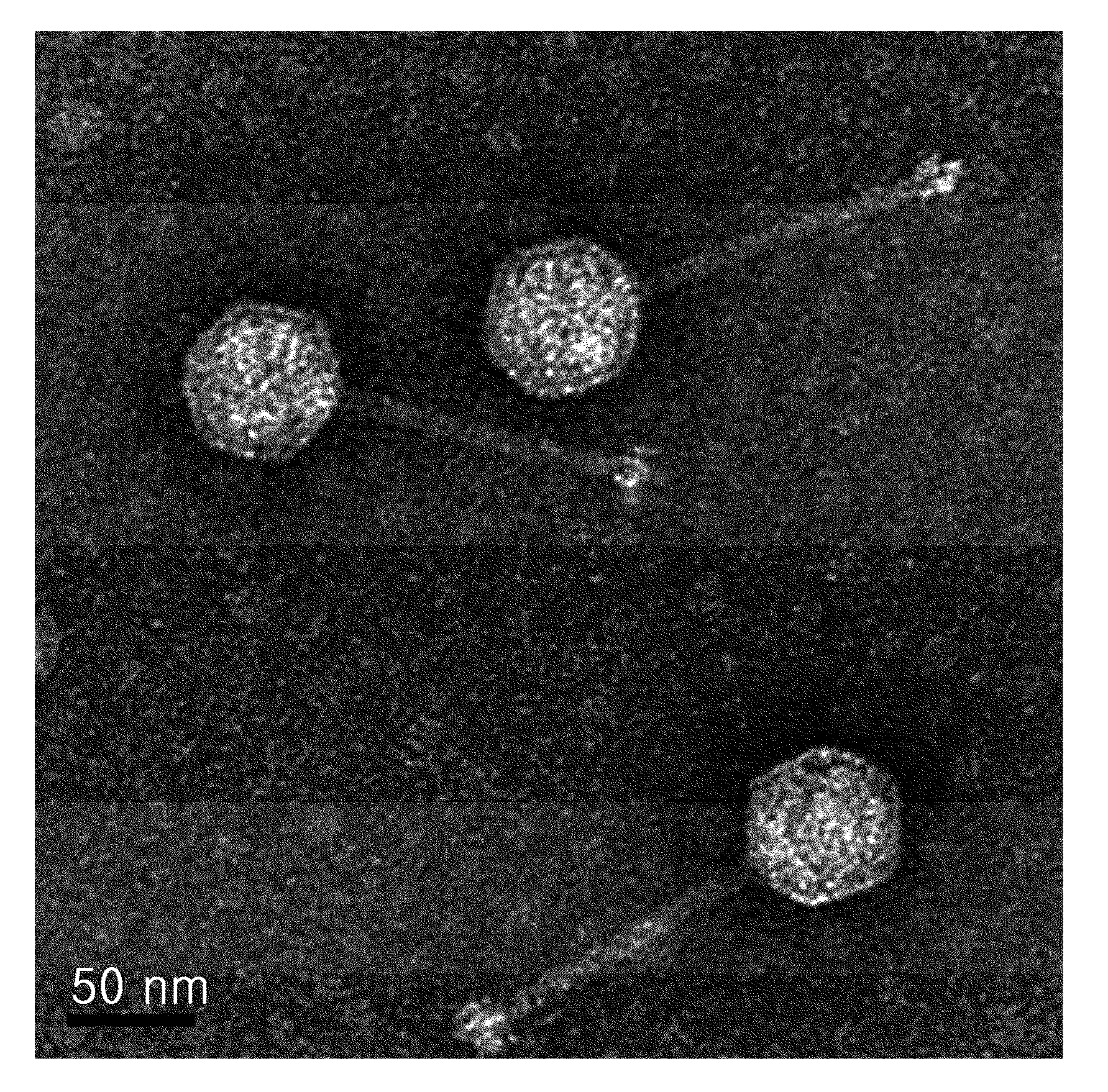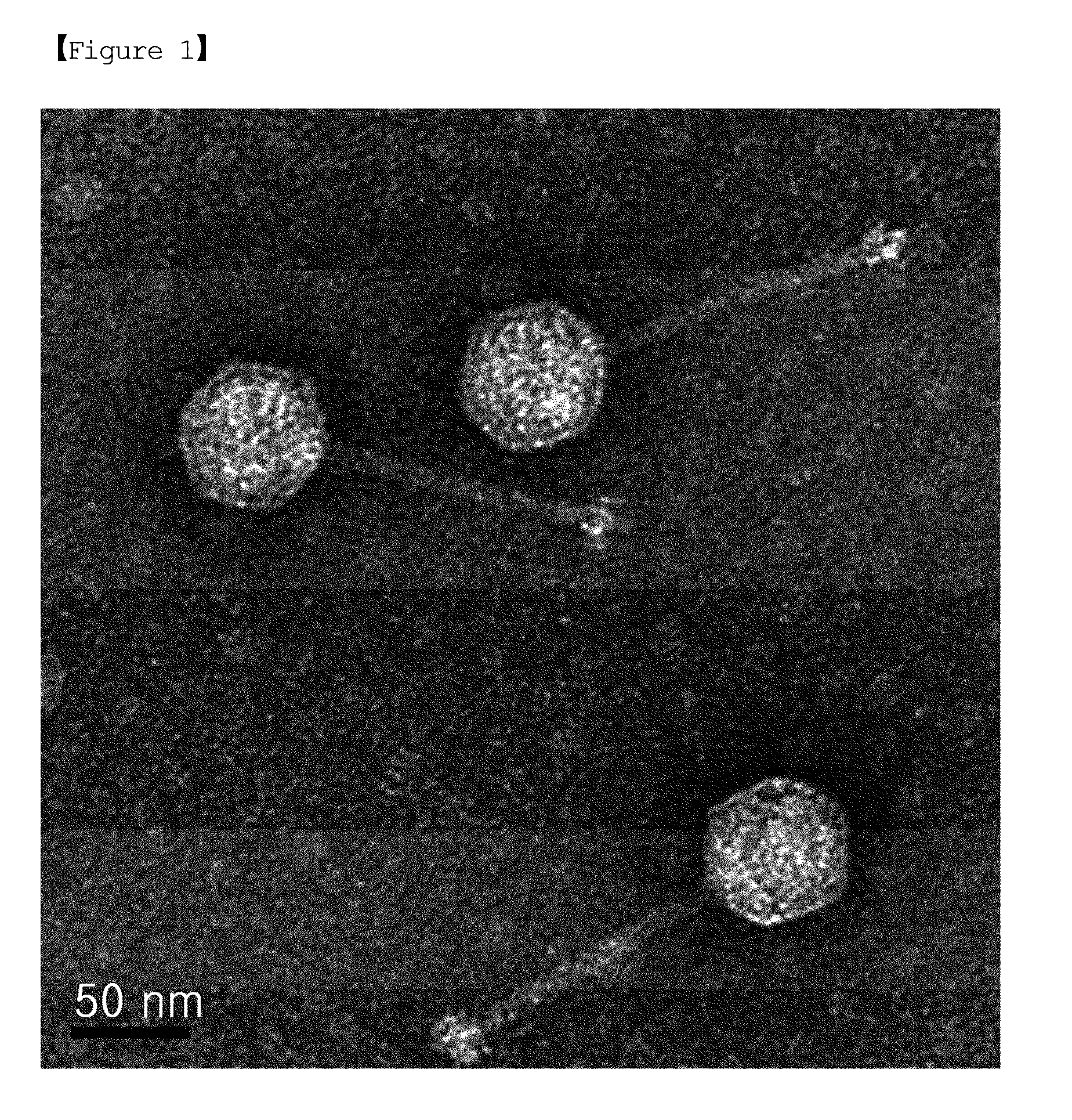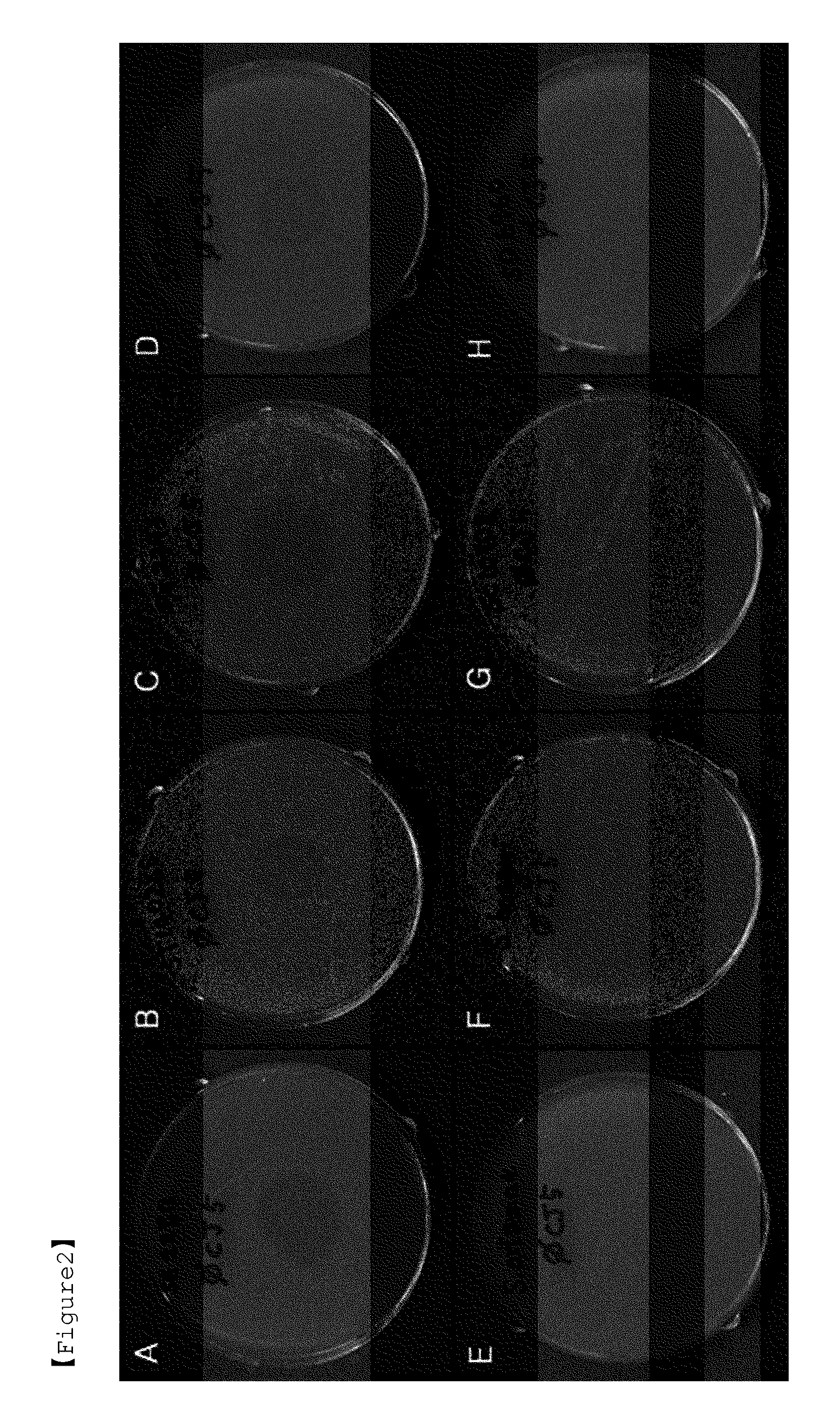Novel bacteriophage and antibacterial composition comprising the same
a technology of bacteriophage and composition, applied in the direction of antibacterial agents, drug compositions, biocides, etc., can solve the problems of ft brown economic loss, affecting the survival of chickens, and causing huge damage to farmers or consumers
- Summary
- Abstract
- Description
- Claims
- Application Information
AI Technical Summary
Benefits of technology
Problems solved by technology
Method used
Image
Examples
example 1
Salmonella Bacteriophage Isolation
[0089]1-1. Bacteriophage Screening and Single Bacteriophage Isolation
[0090]50 ml of each sample from a chicken slaughterhouse and a nearby sewage disposal plant was transferred to a centrifuge tube, and centrifuged at 4000 rpm for 10 min, followed by filtering the supernatant through a 0.45 μm filter. 18 mL of the sample filtrate was mixed with 150 μl of a Salmonella Enteritidis (hereinafter referred to as “SE”) shaking culture medium (OD600=2) and 2 ml of 10× Luria-Bertani medium (hereinafter referred to as “LB medium”, tryptone 10 g; yeast extract 5 g; NaCl 10 g; in a final volume of 1 L). The mixture was cultured at 37° C. for 18 hrs and then centrifuged at 4000 rpm for 10 min after which the supernatant was filtered through a 0.45 μm filter. Separately, a mixture of 3 ml of 0.7% agar (w / v) and 150 μl of the SE shaking culture medium (OD600=2) was poured across an LB plate and allowed to solidify. Over this plate was spread 10 μl of the culture f...
example 2
Examination on φCJ5 Infection of Salmonella
[0094]To analyze the selected bacteriophage for lytic activity on Salmonella species other than SE, attempts were made of cross infection with other Salmonella species. As a result, ΦCJ5 did not infect SC (Salmonella Choleraesuis), SD (Salmonella Derby), SA (Salmonella arizonae), and SB (Salmonella bongori), but infected SE, ST (Salmonella typhimurium), SG (Salmonella Gallinarum) and SP (Salmonella Pullorum) (see Example 11). The results are summarized in Table 1, below and shown in FIG. 2.
TABLE 1ΦCJ5 Infection of SalmonellaSeroStrainPlaqueSeroStrainPlaquetypenameformationtypenameformationSESGSC 2282◯SAATCC 13314XSTATCC 14028◯SBATCC 43975XSGSGSC 2293◯SCATCC 10708XSPSGSC 2295◯SDATCC 6960XATCC: The Global Bioresource CenterSGSC: Salmonella Genetic Stock Center
example 3
Morphology of Bacteriophage ΦCJ5
[0095]The purified ΦCJ5 was diluted in a 0.01% gelatin solution, and then fixed in a 2.5% glutaraldehyde solution. The sample was dropped onto a carbon-coated mica plate (ca.2.5×2.5 mm), adapted for 10 min, and washed with sterile distilled water. A carbon film was mounted on a copper grid, stained with 4% uranyl acetate for 30-60 sec, and dried. Examination under a JEM-1011 transmission electron microscope (at 80 kV, magnification of X 120,000˜X 200,000), as shown in FIG. 1, had it that the purified ΦCJ5 consisted morphologically of an isometric capsid and a long non-contractile tail, indicating that it belongs to the family Siphoviridae of morphotype B1.
PUM
| Property | Measurement | Unit |
|---|---|---|
| pH | aaaaa | aaaaa |
| pH | aaaaa | aaaaa |
| temperature | aaaaa | aaaaa |
Abstract
Description
Claims
Application Information
 Login to View More
Login to View More - R&D
- Intellectual Property
- Life Sciences
- Materials
- Tech Scout
- Unparalleled Data Quality
- Higher Quality Content
- 60% Fewer Hallucinations
Browse by: Latest US Patents, China's latest patents, Technical Efficacy Thesaurus, Application Domain, Technology Topic, Popular Technical Reports.
© 2025 PatSnap. All rights reserved.Legal|Privacy policy|Modern Slavery Act Transparency Statement|Sitemap|About US| Contact US: help@patsnap.com



